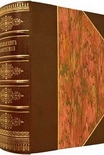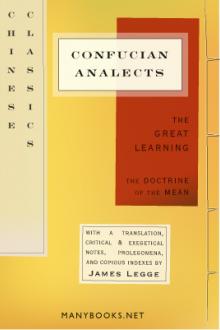Myths and Legends of China by E. Werner (free ebook reader for iphone TXT) 📗

- Author: E. Werner
Book online «Myths and Legends of China by E. Werner (free ebook reader for iphone TXT) 📗». Author E. Werner
In the third century B.C. began the hostile relations of Page 21the Chinese with the northern nomads, which continued throughout the greater part of their history. During the first six centuries A.D. there was intercourse with Rome, Parthia, Turkey, Mesopotamia, Ceylon, India, and Indo-China, and in the seventh century with the Arabs. Europe was brought within the sociological environment by Christian travellers. From the tenth to the thirteenth century the north was occupied by Kitans and Nüchêns, and the whole Empire was under Mongol sway for eighty-eight years in the thirteenth and fourteenth centuries. Relations of a commercial and religious nature were held with neighbours during the following four hundred years. Regular diplomatic intercourse with Western nations was established as a result of a series of wars in the eighteenth and nineteenth centuries. Until recently the nation held aloof from alliances and was generally averse to foreign intercourse. From 1537 onward, as a sequel of war or treaty, concessions, settlements, etc., were obtained by foreign Powers. China has now lost some of her border countries and large adjacent islands, the military and commercial pressure of Western nations and Japan having taken the place of the military pressure of the Tartars already referred to. The great problem for her, an agricultural nation, is how to find means and the military spirit to maintain her integrity, the further violation of which could not but be regarded by the student of sociological history as a great tragedy and a world-wide calamity.
Physical, Emotional, and Intellectual Characters
The physical characters of the Chinese are too well known to need detailed recital. The original immigrants into North China all belonged to blond races, but the Page 22modern Chinese have little left of the immigrant stock. The oblique, almond-shaped eyes, with black iris and the orbits far apart, have a vertical fold of skin over the inner canthus, concealing a part of the iris, a peculiarity distinguishing the eastern races of Asia from all other families of man. The stature and weight of brain are generally below the average. The hair is black, coarse, and cylindrical; the beard scanty or absent. The colour of the skin is darker in the south than in the north.
Emotionally the Chinese are sober, industrious, of remarkable endurance, grateful, courteous, and ceremonious, with a high sense of mercantile honour, but timorous, cruel, unsympathetic, mendacious, and libidinous.
Intellectually they were until recently, and to a large extent still are, non-progressive, in bondage to uniformity and mechanism in culture, imitative, unimaginative, torpid, indirect, suspicious, and superstitious.
The character is being modified by intercourse with other peoples of the earth and by the strong force of physical, intellectual, and moral education.
Marriage in Early Times
Certain parts of the marriage ceremonial of China as now existing indicate that the original form of marriage was by capture—of which, indeed, there is evidence in the classical Book of Odes. But a regular form of marriage (in reality a contract of sale) is shown to have existed in the earliest historical times. The form was not monogamous, though it seems soon to have assumed that of a qualified monogamy consisting of one wife and one or more concubines, the number of the latter being as a rule limited only by the means of the husband. The higher the rank the larger was the number of concubines Page 23and handmaids in addition to the wife proper, the palaces of the kings and princes containing several hundreds of them. This form it has retained to the present day, though associations now exist for the abolition of concubinage. In early times, as well as throughout the whole of Chinese history, concubinage was in fact universal, and there is some evidence also of polyandry (which, however, cannot have prevailed to any great extent). The age for marriage was twenty for the man and fifteen for the girl, celibacy after thirty and twenty respectively being officially discouraged. In the province of Shantung it was usual for the wives to be older than their husbands. The parents’ consent to the betrothal was sought through the intervention of a matchmaker, the proposal originating with the parents, and the wishes of the future bride and bridegroom not being taken into consideration. The conclusion of the marriage was the progress of the bride from the house of her parents to that of the bridegroom, where after various ceremonies she and he worshipped his ancestors together, the worship amounting to little more than an announcement of the union to the ancestral spirits. After a short sojourn with her husband the bride revisited her parents, and the marriage was not considered as finally consummated until after this visit had taken place.
The status of women was low, and the power of the husband great—so great that he could kill his wife with impunity. Divorce was common, and all in favour of the husband, who, while he could not be divorced by her, could put his wife away for disobedience or even for loquaciousness. A widower remarried immediately, but refusal to remarry by a widow was esteemed an act of chastity. She often mutilated herself or even committed Page 24suicide to prevent remarriage, and was posthumously honoured for doing so. Being her husband’s as much in the Otherworld as in this, remarriage would partake of the character of unchastity and insubordination; the argument, of course, not applying to the case of the husband, who by remarriage simply adds another member to his clan without infringing on anyone’s rights.
Marriage in Monarchical and Republican Periods
The marital system of the early classical times, of which the above were the essentials, changed but little during the long period of monarchical rule





Comments (0)